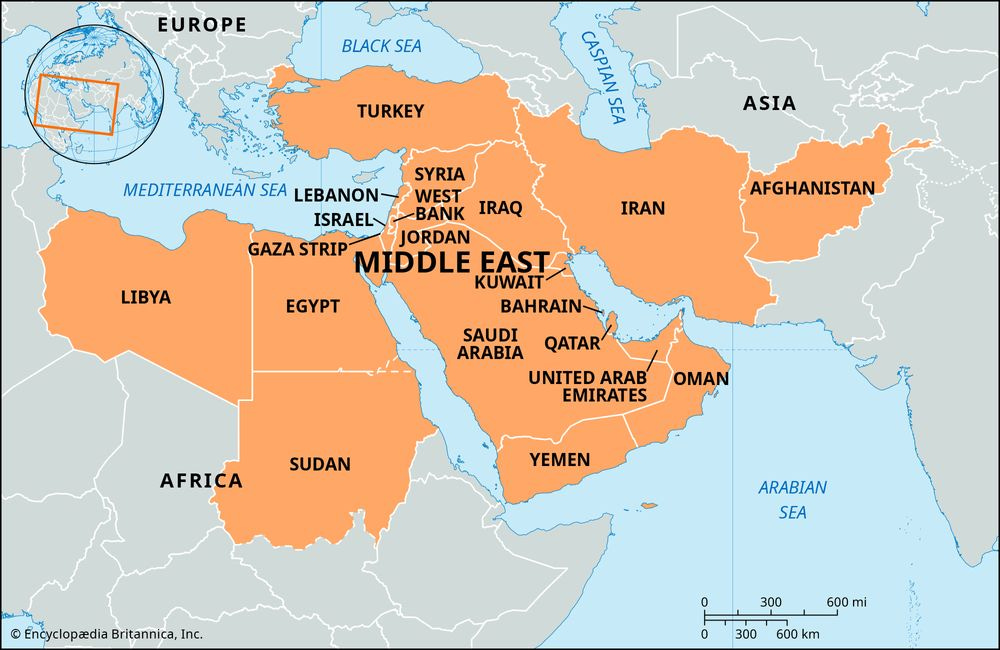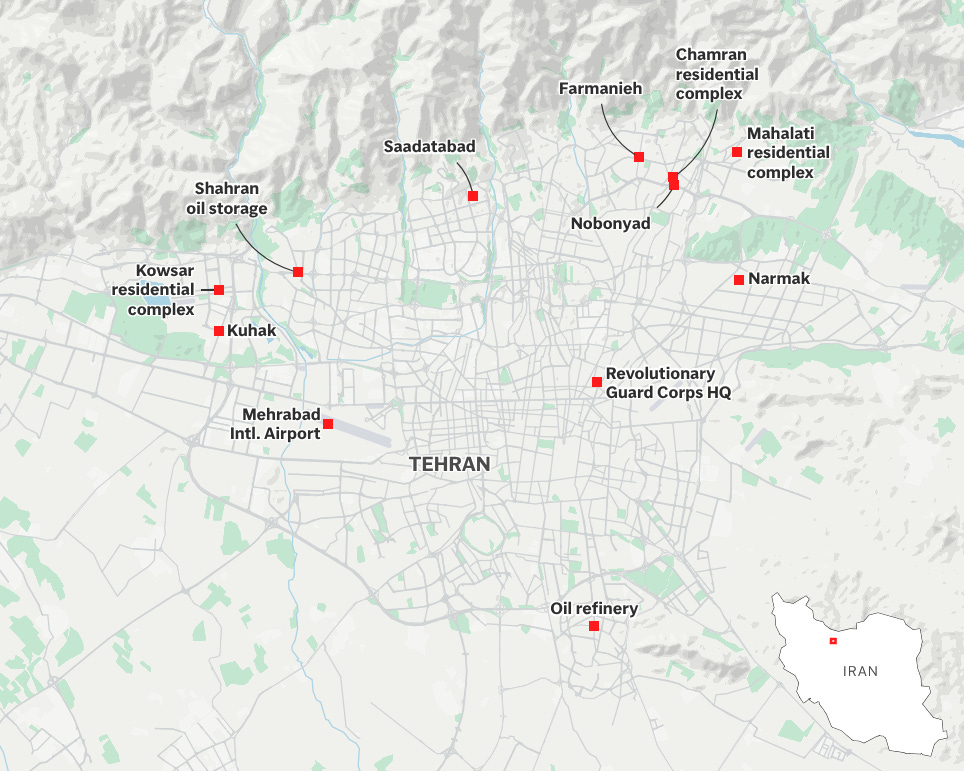Table of contents:
Introduction.
Deconstructing the direct conflict.
Israel's "Operation rising lion".
Iran's "Operation true promise III".
The geopolitical chessboard.
Macro-economic impacts.
Scenario A (base case): contained escalation and protracted tension.
Scenario B (worst case): Regional conflagration and systemic shock.
Scenario C (best case): Forced de-escalation and fragile diplomacy.
Investment thesis.
Sector-level risk and opportunity mapping.
Asset allocation and hedging strategies for a volatile environment.
Monitoring framework for investors and key signposts to watch.
Introduction
The sudden military conflict erupted in June 2025 between Israel and Iran, marking the most intense confrontation between the two adversaries in decades. Israel’s preemptive strikes on Iran’s nuclear and military assets–which killed top Iranian commanders and scientists–prompted Iran to retaliate with unprecedented missile barrages on Israeli cities.
Just in case you don’t know where this two countries are:
In this report we analyze the economic, market, and geopolitical consequences of the conflict, and provides investment strategy recommendations amid heightened uncertainty. So let’s start by answering the question: What the hell is happening in the world right now!?
Brent crude spiked ~7% on the initial attacks (briefly +13% intraday), reflecting fears of supply disruption through the Strait of Hormuz–a chokepoint for ~20% of global oil. A further escalation (e.g. an Iranian blockade of Hormuz) could drive oil >$100, rekindling CPI inflation and delaying expected Fed/ECB rate cuts.
Gold jumped ~1.4% toward record highs and the U.S. dollar rose ~0.5% (DXY ~98.2). Global equities sold off (S&P 500 –1.1%, Euro Stoxx –0.9%, MSCI Asia ~–1%) on June 13, led by energy-importing sectors. Defense stocks surged >3%, while airlines plunged 4–5% on fuel cost and route concerns. Bond markets saw yields whipsaw: U.S. 10-year yields rose ~6 bps (to ~4.41%) as oil-driven inflation fears outweighed initial flight-to-quality demand.
The conflict’s impact varies by sector and region. Energy and defense industries are outperforming, whereas transport, tourism, and some EM assets face pressure. Middle Eastern equity markets tumbled (Qatar –2.9%, Saudi –1.6% intraday) on war fears, while Israel’s market proved resilient (Tel Aviv index +0.5% after initial dip) as authorities kept the economy functioning.
A protracted conflict that keeps oil prices elevated could delay rate cuts in the U.S. and Eurozone. Initially, the oil shock led markets to price in a more hawkish Fed stance. Central bankers must now juggle opposing forces: higher energy costs boosting inflation versus safe-haven flows and growth risks that could ease long-term rates.
Thus far, Israel and Iran have contained the fight to each other, but risks of regional spillover are high. The U.S. is tacitly supporting Israel’s defense (intercepting some Iranian missiles) while urging a ceasefire; President Trump publicly hopes for a deal but remarked “sometimes they have to fight it out”. Internal White House divisions have emerged: Trump reportedly vetoed an Israeli request to assassinate Iran’s Supreme Leader (Khamenei) to avoid massive escalation, reflecting a split between Trump’s “America First” reluctance and Washington hawks pushing a harder line. U.S. right-wing commentators and allies have also warned against America being drawn into another endless war, urging Trump to drop Israel if necessary to keep the U.S. out.
Key U.S. allies are navigating a delicate balance. Saudi Arabia and other Gulf states (which oppose Iran’s regional influence) quietly welcome Israel’s moves against Iran’s nuclear program, yet they fear becoming targets. An Israeli strike on Iran’s South Pars gas field (shared with Qatar) rattled the Gulf by raising the specter of energy infrastructure attacks. Jordan has already intercepted missiles/drones straying into its airspace. The UK dispatched RAF fighters to the Middle East as a precaution, signaling potential support for Israel “to protect our allies” beyond just defending British assets. Nevertheless, European leaders are urging restraint – e.g. Britain’s PM and Germany’s Chancellor stressed avoiding broader war and reviving diplomacy.
Absent a diplomatic breakthrough, the conflict may drag on with periodic escalations. Both sides have signaled they will not back down immediately: Israel warns its campaign will “continue to escalate in coming days”, while Iran vows to “open the gates of hell” in retaliation but says it won’t negotiate under fire. Market risk scenarios include a potential regional war (if Iran’s proxies in Lebanon, Iraq, or Yemen more fully engage, or if Iran strikes U.S. assets – a “red line” that could trigger direct U.S. intervention). This worst-case scenario could send oil skyrocketing, sink equities further into risk-off, and spur a deeper stagflationary shock (higher inflation and weaker growth). Conversely, a ceasefire or limited conflict would allow markets to stabilize, with the oil price spike retracing (already, prices have seesawed as traders reassess “overreaction” risk).
So, between June 13—16, 2025:
Deconstructing the direct conflict
The weekend's events were not a limited, symbolic exchange but a significant and deadly military confrontation that has fundamentally rewritten the rules of engagement between Israel and Iran. The long-practiced shadow war has given way to direct, overt state-on-state hostilities, establishing a new and far more dangerous baseline for regional risk assessment. A granular analysis of the military operations, objectives, and outcomes reveals the true scale of this escalation.
Israel's "Operation rising lion"
Israel's offensive was not merely retaliatory but a comprehensive and audacious military campaign conceived as a preemptive act of self-defense. The stated rationale was to prevent Iran from reaching a point of no return in its nuclear program, with Israeli intelligence asserting that Tehran was advancing a secret plan to fast-track weaponization. Prime Minister Benjamin Netanyahu framed the operation in stark, almost messianic terms, referencing a biblical verse to portray the war as a sacred mission to eliminate what Israel views as an existential threat.
The operational objectives were multifaceted and designed to inflict maximum disruption:
The primary goal was to assassinate senior commanders of Iran's Islamic Revolutionary Guard Corps and key nuclear scientists. This was intended to paralyze Iran's command-and-control structure and hinder its ability to mount a coordinated response. The initial strikes reportedly caught the Iranian leadership by surprise, with some commanders killed in their homes.
A core component of the operation was the widespread targeting of Iran's strategic infrastructure. Israeli jets struck nuclear facilities at Natanz and Isfahan, military bases, missile production and storage sites, and air defense systems across the country.
The campaign quickly expanded beyond purely military targets to include vital economic assets. Strikes on the South Pars gas field, the world's largest, and the Shahran oil depot near Tehran were designed to cripple Iran's economy and apply broad pressure on the regime.
The execution was swift and massive. The campaign, planned to unfold over weeks, not days, involved over 200 Israeli fighter jets striking approximately 200 locations across Iran in the initial waves. This scale and intensity underscore a strategic decision to move decisively beyond the bounds of covert action.
Iran's "Operation true promise III"
Iran's response was framed as an exercise of its inherent right to self-defense under Article 51 of the UN Charter, following what it termed a "brazen act of aggression" and a "terrorist act" by Israel. The objective was not merely to save face but to re-establish deterrence and demonstrate unequivocally that direct attacks on Iranian sovereign territory would be met with a forceful and painful response.
Iran's retaliation was strategically targeted to inflict meaningful damage on high-value Israeli military and symbolic sites:
The centerpiece of Iran's retaliation was the targeting of the Kirya complex in Tel Aviv, the headquarters for the Israeli military's central command and the Ministry of Defense—often referred to as Israel's Pentagon. This was a clear message aimed at the nerve center of Israel's defense establishment, demonstrating a new level of audacity and capability.
In a significant departure from past proxy attacks, Iran launched missile barrages directly at major Israeli population centers, including Tel Aviv, Jerusalem, and Haifa. The resulting casualties, property damage, and widespread panic created an experience unfamiliar to many Israelis, who are more accustomed to smaller-scale, less sophisticated rocket attacks from Gaza or Lebanon.
The scope of the Iranian response was unprecedented. Multiple waves involving hundreds of ballistic missiles and drones were launched from Iranian territory. This massive salvo was designed to saturate Israel's sophisticated air defense systems and prove that Iran possesses a credible, direct-strike capability that can penetrate Israeli airspace and inflict damage.
This direct confrontation has laid bare a critical strategic and economic vulnerability. The high cost of Israeli interceptors—with a single Iron Dome Tamir missile costing around $50,000 and an Arrow interceptor costing over $2 million—stands in stark contrast to the likely lower cost of Iran's offensive missiles. A prolonged conflict could thus evolve into a war of economic attrition. Iran can impose disproportionately high financial costs on Israel for every defensive engagement. This dynamic creates a dangerous incentive structure: it pushes Israel toward seeking a rapid, decisive, and potentially more escalatory victory to avoid being bled economically, while Iran may see an advantage in a protracted, lower-intensity conflict that drains Israeli resources.
Furthermore, the overt nature of the state-on-state attacks marks the definitive end of the shadow war paradigm. The buffers of plausible deniability and the slower tempo afforded by proxy warfare have been eliminated. Every action now demands a direct and visible state-level response, compressing decision-making timelines and dramatically increasing the psychological impact on civilian populations. This shift fundamentally elevates the risk of a minor incident or miscalculation spiraling uncontrollably into a major regional war. The entire risk framework for the region must be recalibrated to account for this new, more volatile reality.
The geopolitical chessboard
The direct conflict between Israel and Iran has sent shockwaves through the international community, revealing complex, shifting, and often contradictory geopolitical alignments. The responses of key global and regional powers are not monolithic but are shaped by a tangled web of strategic interests, domestic pressures, and historical relationships. Understanding this intricate chessboard is critical to forecasting the conflict's potential trajectory and its second-order effects.
The United States' position is the most pivotal and perplexing. The Trump administration is attempting to execute a high-risk, dual-track policy that combines public calls for restraint with private encouragement of Israeli military action:
Publicly, President Trump has repeatedly called for de-escalation, urging both sides to "make a deal" and emphasizing his preference for a diplomatic solution to the nuclear issue. However, multiple reports from U.S. and Israeli officials confirm that the White House gave "implicit US approval" or a "tacit green light" for Israel's "Operation rising lion". This represents a strategy of using a partner's military force as a coercive tool to create leverage in nuclear negotiations, with Trump framing the strikes as a "second chance" for Iran to come to the table.
This two-faced policy is a direct reflection of deep ideological fissures within the administration and the broader Republican party. It pits President Trump's non-interventionist "America First" instincts against intense pressure from hawkish figures in the Pentagon and influential pro-Israel lobbies who advocate for a more aggressive posture toward Iran. This has created a backlash among some of Trump's own base, who view support for the Israeli attack as a betrayal of the promise to end foreign entanglements.
The U.S. has drawn a clear, albeit thin, line in its military support. American forces, including naval assets and ground-based air defense systems, have been actively involved in defending Israel by intercepting Iranian missiles and drones. However, Washington has thus far rebuffed Israeli requests to participate in
offensive strikes against Iran. This "defend but don't attack" posture is a critical policy choice aimed at preventing a direct U.S.-Iran war, a scenario Trump is keen to avoid.
The strategy of weaponizing diplomacy appears to have backfired spectacularly. Iran perceived the U.S. stance—maintaining the pretense of upcoming nuclear talks in Oman while secretly approving the Israeli attack—as a deliberate deception and a profound betrayal. As a direct result, Tehran immediately cancelled the scheduled sixth round of negotiations, declaring that dialogue was "meaningless". This has not only stalled the diplomatic track but has also severely eroded any remaining U.S. credibility as a negotiating partner in the eyes of Tehran, making a future peaceful resolution significantly more difficult to achieve.
The conflict has starkly revealed a fundamental divergence between the security priorities of Israel and the Arab Gulf states. Far from welcoming an attack on their regional rival, the Gulf monarchies have responded with alarm and a unified call for de-escalation:
Key U.S. partners in the region, including Saudi Arabia, the United Arab Emirates (UAE), Kuwait, and Qatar, have issued strong public statements condemning the Israeli strikes. They have characterized the attacks as a dangerous violation of international law that threatens to plunge the entire region into a wider war.
The primary driver of this position is economic self-interest. A full-blown regional war would be catastrophic for the Gulf states' ambitious economic diversification programs, such as Saudi Vision 2030 and the UAE's post-oil transition. The instability, disruption to trade, and spike in insurance and shipping costs would deter the massive foreign direct investment these projects depend on. Consequently, their overriding strategic priority is to contain the conflict and maintain regional stability to protect their economic futures.
Riyadh has taken a leading role in diplomatic efforts to defuse the crisis. Saudi officials have engaged with counterparts in both Washington and Tehran, calling for restraint and UN Security Council intervention. The Kingdom has also unequivocally stated that its territory and airspace cannot be used for any military operations related to the conflict, reinforcing its position of non-involvement. This positions Saudi Arabia not as a silent partner in an anti-Iran coalition, but as a crucial and active force for de-escalation.
The Hashemite Kingdom of Jordan faces a particularly acute dilemma. As a country with a formal peace treaty with Israel, a deep security partnership with the U.S., and a majority-Palestinian population, it is caught between powerful opposing forces. The government fears that the conflict could destabilize the West Bank and trigger a new wave of refugees, a scenario it has described as a "declaration of war". In a demonstration of its "nation-first" security policy, the Jordanian military actively intercepted Iranian missiles and drones that violated its airspace en route to Israel, stating the action was necessary to protect its own sovereignty and prevent debris from falling on populated areas









